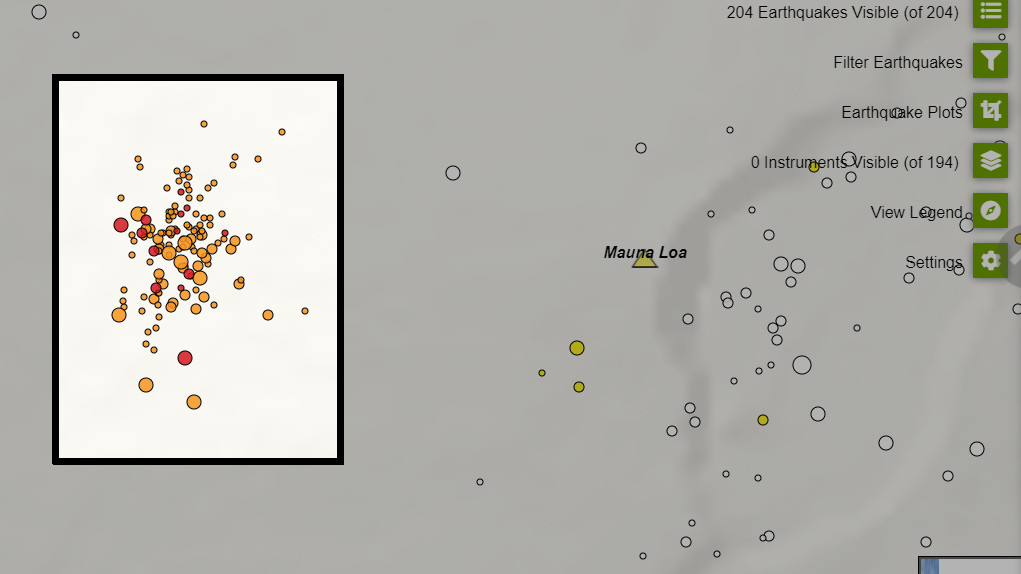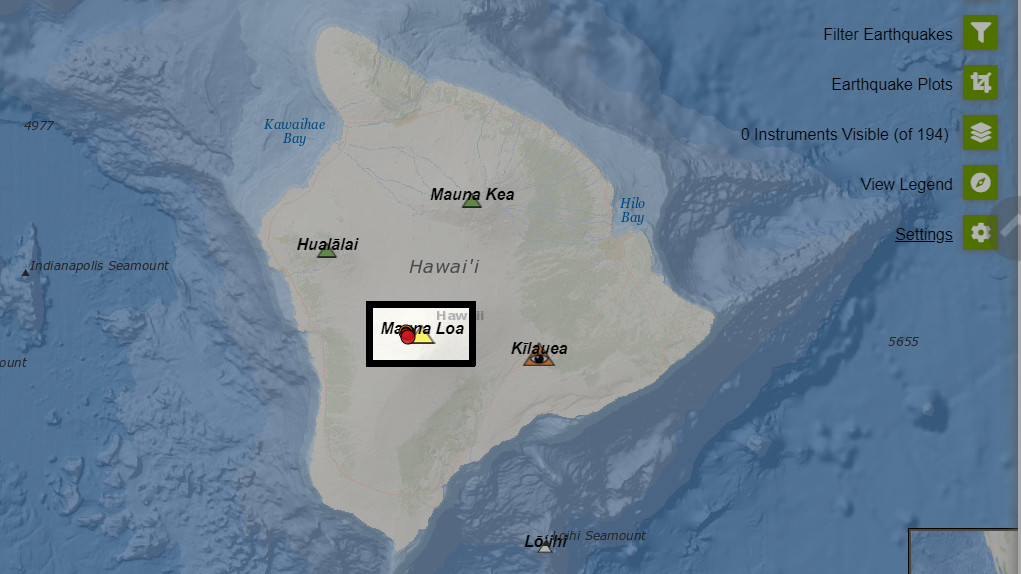(BIVN) – A small earthquake swarm is occurring on the west flank of Mauna Loa volcano on Hawaiʻi island.
Mauna Loa Volcano is not erupting. Scientists say rates of deformation and seismicity at the summit remain slightly elevated and above long-term background levels.
Last week, the USGS Hawaiian Volcano Observatory reported Mauna Loa monitoring data streams “show no significant change in deformation rates or patterns that would indicate increased volcanic hazard at this time.”
UPDATE – (4:30 p.m. HST) – An official USGS statement about the current earthquake swarm was released at 4:04 p.m. HST:
ACTIVITY SUMMARY
A swarm of earthquakes, that began on March 29, 2021, at 2:30 a.m. HST is occurring beneath the northwest flank of Mauna Loa. Mauna Loa is not erupting and other monitoring data streams currently show no signs of increased activity within the past day.
OBSERVATIONS
Beginning at 2:30 a.m. HST on March 29, 2021, the U.S. Geological Survey’s Hawaiian Volcano Observatory (HVO) has recorded over 130 earthquakes beneath the northwest side of Mauna Loa’s summit, about 42 km (26 miles) WNW of Volcano. Most of these earthquakes are occurring in a cluster about 2 km (1 mile) wide and 6–8 km (3.5–5 miles) below the surface.
The largest event in the sequence, so far, was a magnitude-2.7 earthquake, with the bulk of the events being less than magnitude-2. Only one event was reported felt by a resident and was described as weak shaking with a maximum Intensity of II on the Modified Mercalli Intensity Scale.
Clustering of shallow earthquakes in this region does not mean an eruption is imminent. HVO has recorded shallow earthquakes in this area for many decades across several eruptive cycles at both Kīlauea and Mauna Loa. These earthquakes may result from changes in the magma storage system and/or may be part of normal re-adjustments of the volcano due to changing stresses within it. Other monitoring data streams for Mauna Loa and Kīlauea, including ground deformation, gas, and imagery, show no significant changes in activity.
HVO continues to closely monitor geologic changes, seismicity, deformation, and gas emissions at Mauna Loa and Kīlauea volcanoes. HVO will issue additional messages and alert level changes as warranted by changing activity.
For more information on earthquakes in this area, please see the Volcano Watch article titled, “Mauna Loa—A Stirring Giant?” published by HVO scientists on June 12, 2014.
For information on recent earthquakes in Hawaii and eruption updates, visit the USGS Hawaiian Volcano Observatory website.
This is the second earthquake swarm on Mauna Loa this month. On March 18, the USGS Hawaiian Volcano Observatory issued an information statement in regards to a small swarm of shallow seismicity beneath the upper Ka‘ōiki seismic zone under Mauna Loa’s southeast flank. Scientists said the earthquakes did not show any signs of magmatic involvement and were “part of normal re-adjustments of the volcano due to changing stresses within it.”
At the time of the March 18 statement, the largest event of the swarm on the southeast flank was a a magnitude-3.5 earthquake.
This story will be updated when new information becomes available.



by Big Island Video News3:54 pm
on at
STORY SUMMARY
HAWAIʻI ISLAND - Mauna Loa Volcano is not erupting. The earthquake swarm is located on the west flank of the volcano.